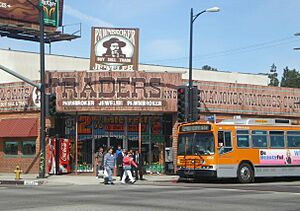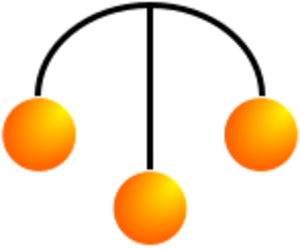Pawnbroker facts for kids
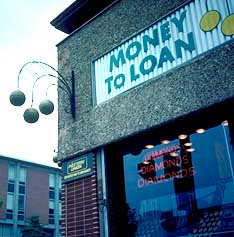
A pawnshop is a special kind of shop where you can borrow money. To get a loan, you leave something valuable with the shop owner, called a pawnbroker. This valuable item could be jewelry, a watch, a camera, a musical instrument, or even a smartphone.
The item you leave is called "collateral." It's like a guarantee for the money you borrow. You can get your item back if you pay back the money you borrowed, plus a small extra fee called "interest." Interest is what you pay for using someone else's money for a short time.
If you don't pay back the loan and interest by an agreed date, the pawnbroker can sell your item to someone else. This helps them get their money back. To stop thieves from selling stolen goods, many places have laws. These laws make people show identification, like a driver's license, when they pawn something.
The History of Pawnshops
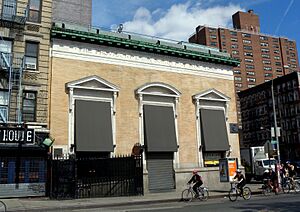
Pawnshops have a very long history! The first ones appeared in ancient China about 3,000 years ago. Back then, people would offer short-term loans to farmers. Even Buddhist temples offered similar services 1,500 years ago. These early pawnshops were often watched closely by rulers.
In the West, pawnshops existed in ancient Greek and Roman times. Many of today's laws about pawnbroking come from Roman ideas. As the Roman Empire grew, so did the idea of pawning items.
Even though the early Roman Catholic Church didn't like charging interest on loans, some groups, like the Franciscans, were allowed to do it to help poor people. Kings also used pawnshops! For example, in 1338, King Edward III of England pawned his jewels to pay for a war with France. King Henry V did the same in 1415.
Sometimes, pawnshops were even set up as charities. In 1450, a Franciscan friar named Barnaba Manassei started the Monte di Pietà movement in Italy. These places gave loans without interest, or with very low interest, to help the poor. Instead of interest, borrowers were encouraged to donate to the Church. This idea spread across Italy and Europe.
A famous example is the Nacional Monte de Piedad in Mexico City. It was started in the 1770s by Pedro Romero de Terreros. He wanted to offer loans to the poor without high interest. Today, it's a large charity and pawn shop with many branches across Mexico.
The Three-Ball Symbol
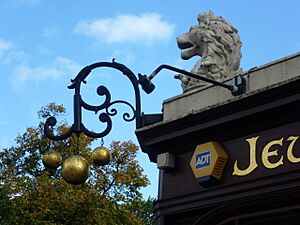
You might have seen the symbol for pawnshops: three golden balls hanging from a bar. This symbol has an interesting story!
Many people think the three-ball symbol comes from the Medici family in Florence, Italy. The Medici family was very successful in banking and lending money. The symbol is also linked to the Lombardy region of Italy, where modern pawn banking began. Some believe the golden balls were originally flat gold coins that were later changed into balls to stand out more.
In many European towns, pawnshops were simply called "Lombards." This is because the Lombards were a group of bankers in medieval London, England. A legend says that a Medici family member helped Charlemagne by defeating a giant with three bags of rocks. This story might have led to the three-ball symbol becoming their family crest. Since the Medicis were so good at money, other families also started using similar symbols.
Another story connects the symbol to Saint Nicholas, who is the patron saint of pawnbrokers. The legend says that Saint Nicholas secretly gave three bags of gold to a poor man's three daughters. This helped them get married.


